August 11, 2025
Recent Insights into Autism and Its Possible Outcomes
Autism Spectrum Disorder (ASD) is a complex neurodevelopmental condition characterized by differences in brain development affecting communication, social interaction, and behavior. While traditionally viewed as a lifelong condition, recent research indicates that some children can experience significant improvements, sometimes even leading to the loss of the autism diagnosis. This article explores the scientific evidence on the potential for recovery, the factors influencing outcomes, brain development differences, and the importance of evidence-based therapies.
Research indicates that a varying percentage of children no longer meet the diagnostic criteria for autism as they mature. Estimates range from as low as 3% to as high as 25%. Large-scale U.S. population studies have provided more specific figures, revealing that approximately 4% to 13% of children diagnosed with ASD lose their diagnosis by certain ages.
Specifically, a 2012 study, which analyzed records from nearly 1,400 children across four states, found that about 4% of children diagnosed with autism by age 8 no longer had the diagnosis. Similarly, parent reports and further research suggest that around 13% of children with ASD may eventually lose this diagnosis, especially those with milder initial symptoms.
Additional factors influence these outcomes. Children diagnosed early, especially before 30 months of age, and those receiving early, intensive interventions such as behavioral therapies, are more likely to experience a change in diagnosis. Such early intervention appears to promote improvements in cognitive, social, and adaptive skills, contributing to these positive shifts.
It’s important to note that some children who lose their ASD diagnosis are later diagnosed with other developmental conditions, like ADHD or language delays. Nonetheless, these findings are promising, indicating that some children with autism can improve significantly as they grow older.
Overall, the data underscores the importance of early detection and intervention. While recovery is not guaranteed for everyone, ongoing research provides hope that targeted therapies and early support can help many children achieve better developmental outcomes.
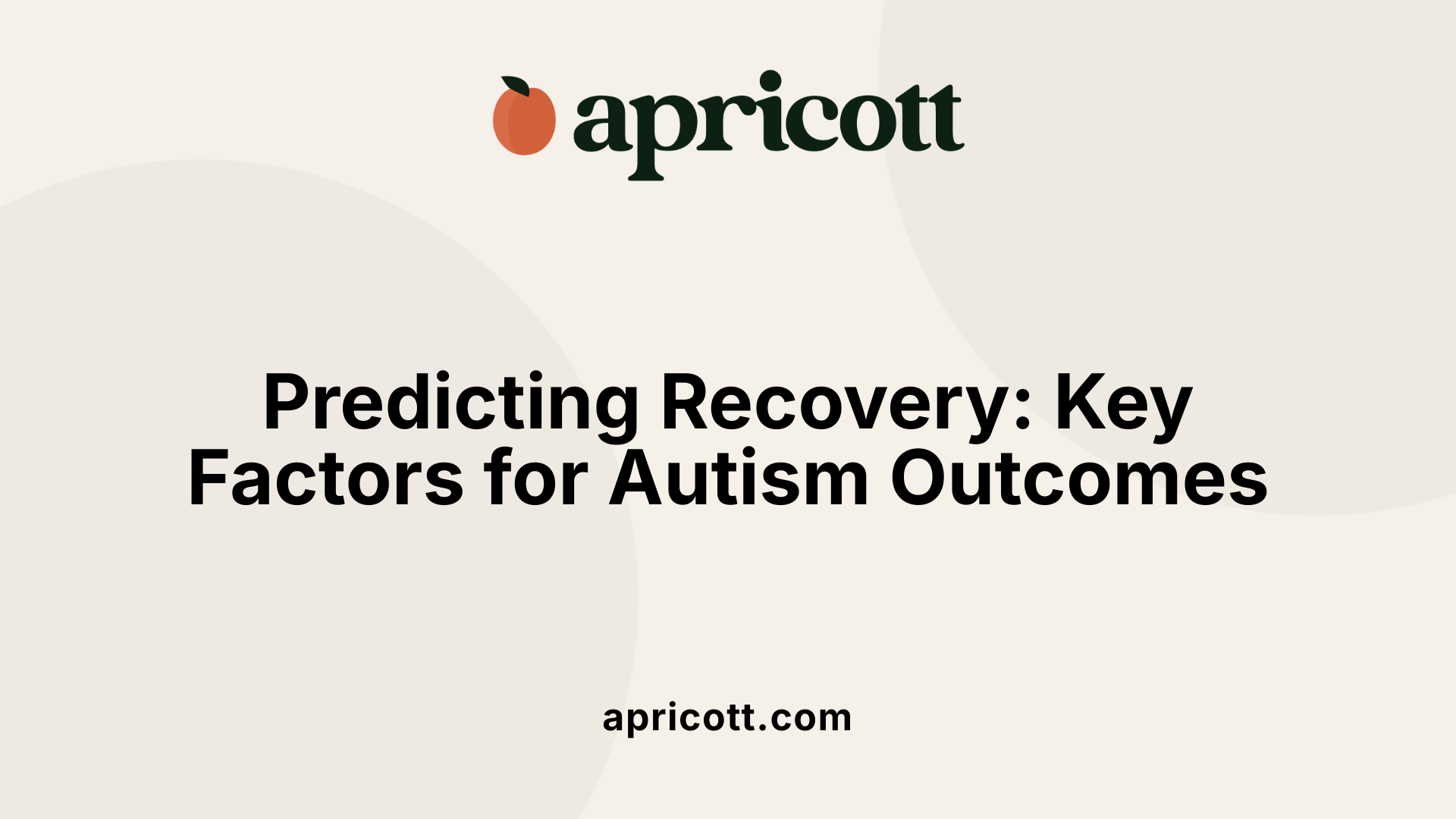
Research shows that certain factors can signal a higher likelihood of recovery or significant symptom reduction in children with autism. Early diagnosis and intervention play a crucial role. When autism is identified at or before 30 months, and treatment begins promptly, the brain's plasticity can be better harnessed to support development.
Children with higher IQ scores and strong early communication skills, especially receptive language, tend to have more positive outcomes. Skills like verbal and motor imitation, along with overall motor development, are also linked to better recovery chances.
Behavioral signs observed from an early age can provide further indications. For instance, children who maintain good eye contact, follow commands, and imitate actions are often on a trajectory toward improving symptoms.
Conversely, certain medical and genetic factors can diminish prospects for recovery. The presence of seizures, intellectual disabilities (sometimes called mental retardation), and genetic syndromes are generally associated with less favorable outcomes.
Controlled studies that have documented successful improvement often involved intensive behavioral techniques, such as Applied Behavior Analysis (ABA). These interventions focus on normalizing input, encouraging social interactions, and practicing skills repeatedly.
However, residual challenges frequently remain after recovery. Some individuals continue to experience higher-order communication and attention issues, as well as co-morbid conditions like tics, depression, and phobias.
Overall, early intervention, strong language development, and behavioral characteristics like imitation are promising signs, while medical and genetic factors can hinder recovery prospects. Understanding these indicators helps tailor treatment plans and set realistic expectations.
| Predictor Factors | Description | Additional Notes |
|---|---|---|
| Early diagnosis and intervention | Diagnosis before age 3 maximizes brain plasticity | Improves outcome probabilities |
| High intelligence | Elevated IQ correlates with better recovery chances | Supports social and cognitive development |
| Strong language skills | Receptive language and verbal abilities are positive signs | Facilitates communication improvements |
| Imitation skills | Ability to imitate actions and words | Aids in learning new behaviors |
| Motor development | Milestones like crawling, walking, coordination | Indicates overall neurological development |
| Medical/genetic factors | Presence of seizures or genetic syndromes | Usually associated with poorer outcomes |
Understanding these predictors assists clinicians and families in planning effective interventions and supporting children towards maximum potential.
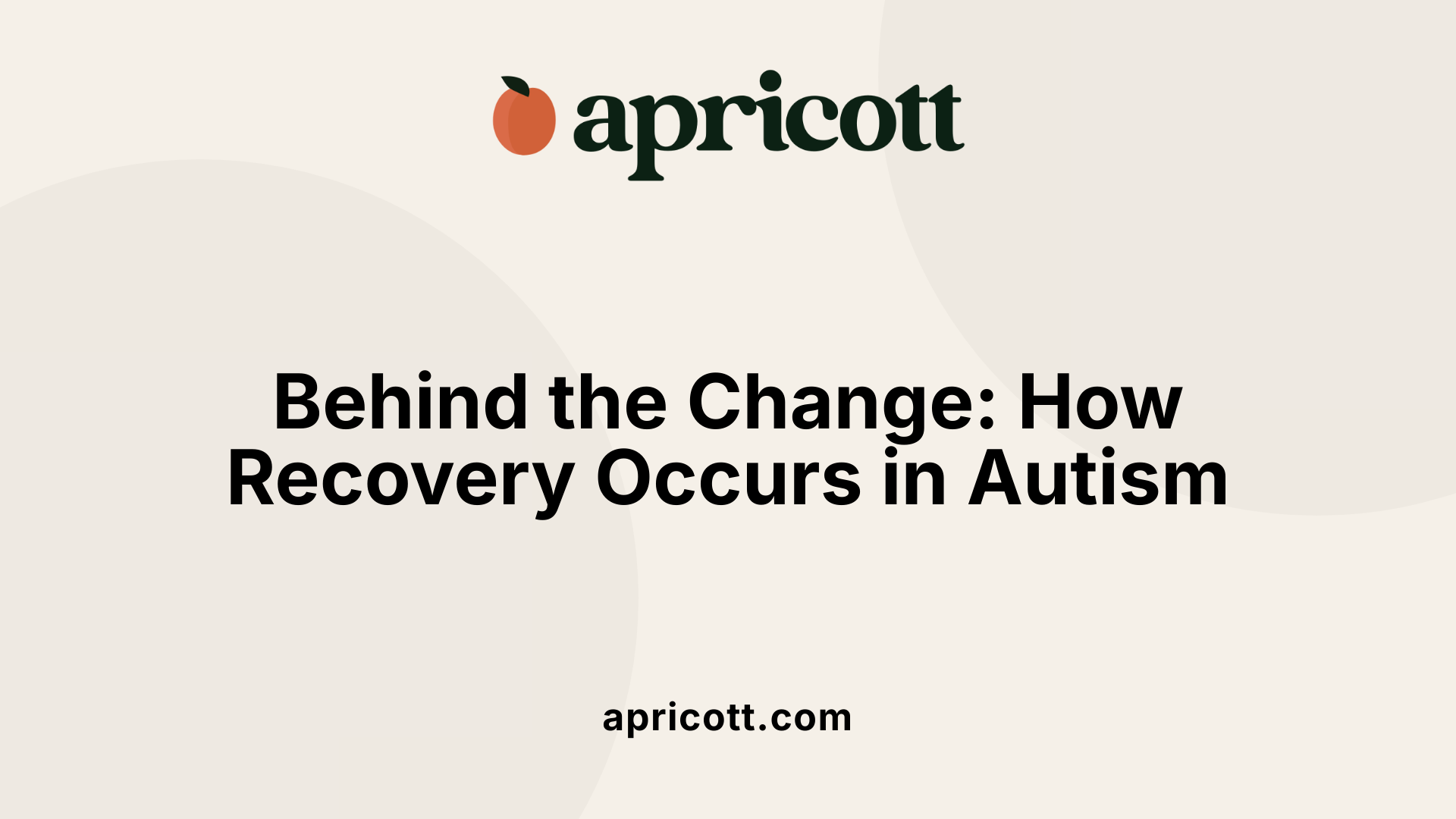
Understanding how some children recover from autism involves exploring several interconnected processes. One primary mechanism is normalizing sensory inputs, which helps the brain process information more effectively. This can be achieved through therapies that reinforce social stimuli, encouraging children to engage more naturally with their environment.
Preventing behaviors that interfere with development is another crucial aspect. For example, reducing repetitive or disruptive behaviors allows children to focus on acquiring and practicing new skills. Simultaneously, mass practice of weak or emerging skills helps strengthen learning pathways, making communication and social interactions more achievable.
Managing stress levels and stabilizing arousal are also essential. High stress can hinder neural development, so techniques aimed at reducing anxiety and creating a calm environment support recovery efforts. Stabilized arousal and emotional regulation create a more conducive setting for learning.
A key concept in understanding recovery is neuroplasticity—the brain's natural ability to reorganize and form new connections. This adaptability is most pronounced in early childhood. Therefore, early intervention leveraging neuroplasticity—such as intensive behavioral therapies—can significantly promote changes in neural circuits related to social and communication skills.
Overall, the combined effect of these mechanisms—sensory normalization, behavioral reinforcement, stress reduction, and neural reorganization—contribute to the possibility of recovering from autism symptoms. While recovery is not guaranteed, early and targeted interventions can foster substantial improvements, supporting children’s development into more socially and communicatively capable individuals.
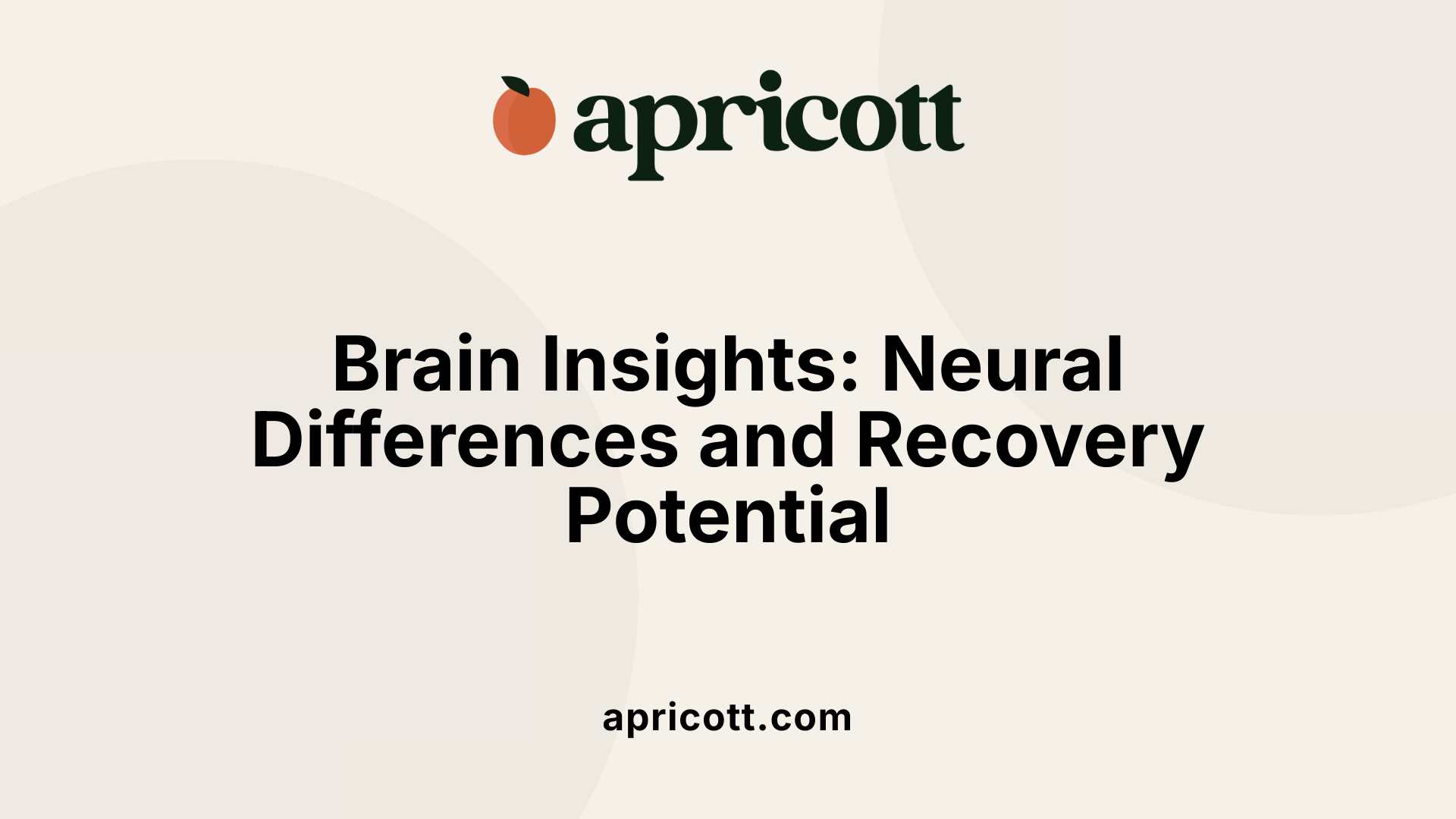
Research indicates that brain development in autism exhibits distinct patterns compared to neurotypical individuals. Several neuroimaging studies have identified structural differences, such as enlarged overall brain volume and atypical cortical thickness. These anatomical variances are often observed in childhood and may persist even in individuals who report significant behavioral recovery.
Atypical neural connectivity and lateralization are also key features. Many studies report disrupted white matter integrity and abnormal functional connectivity in regions associated with social processing and language. These neural anomalies suggest that the typical development of brain networks involved in communication and social interaction is altered.
Interestingly, some individuals classified as having 'optimal outcomes' or who no longer meet ASD criteria show detectable neural differences when compared to control groups and high-functioning autism cases. Functional MRI scans reveal that despite outward behavioral normalization, their neural circuitry differs, indicating that underlying neurobiology may still diverge from typical development.
| Aspect | Typical Development | Autism Spectrum | Recovered Individuals | Details |
|---|---|---|---|---|
| Brain volume | Normal growth | Enlarged in childhood | Variable | Enlargement may normalize or persist; |
some show persistent abnormalities | | Cortical thickness | Standard variation | Increased or decreased in specific areas | Changes correlate with symptom severity | | White matter integrity | Mature and organized | Disrupted connectivity | Differences often linked to language and social deficits |
Studies involving those labeled as having 'optimal outcomes' show that although outward symptoms diminish, their brain structure and functioning can retain differences from neurotypical peers. For example, variations in brain volume and connectivity patterns have been documented, hinting at neurobiological resilience or compensation mechanisms.
Early neurobiological factors play a role in recovery potential. Brain plasticity during childhood facilitates adaptation, especially when supported by early interventions. Some markers, like patterns of neural connectivity and cortical organization, might predict the likelihood of symptom reduction or recovery, although this area continues to be under active investigation. Understanding these markers can help tailor personalized treatment approaches and improve prognosis.
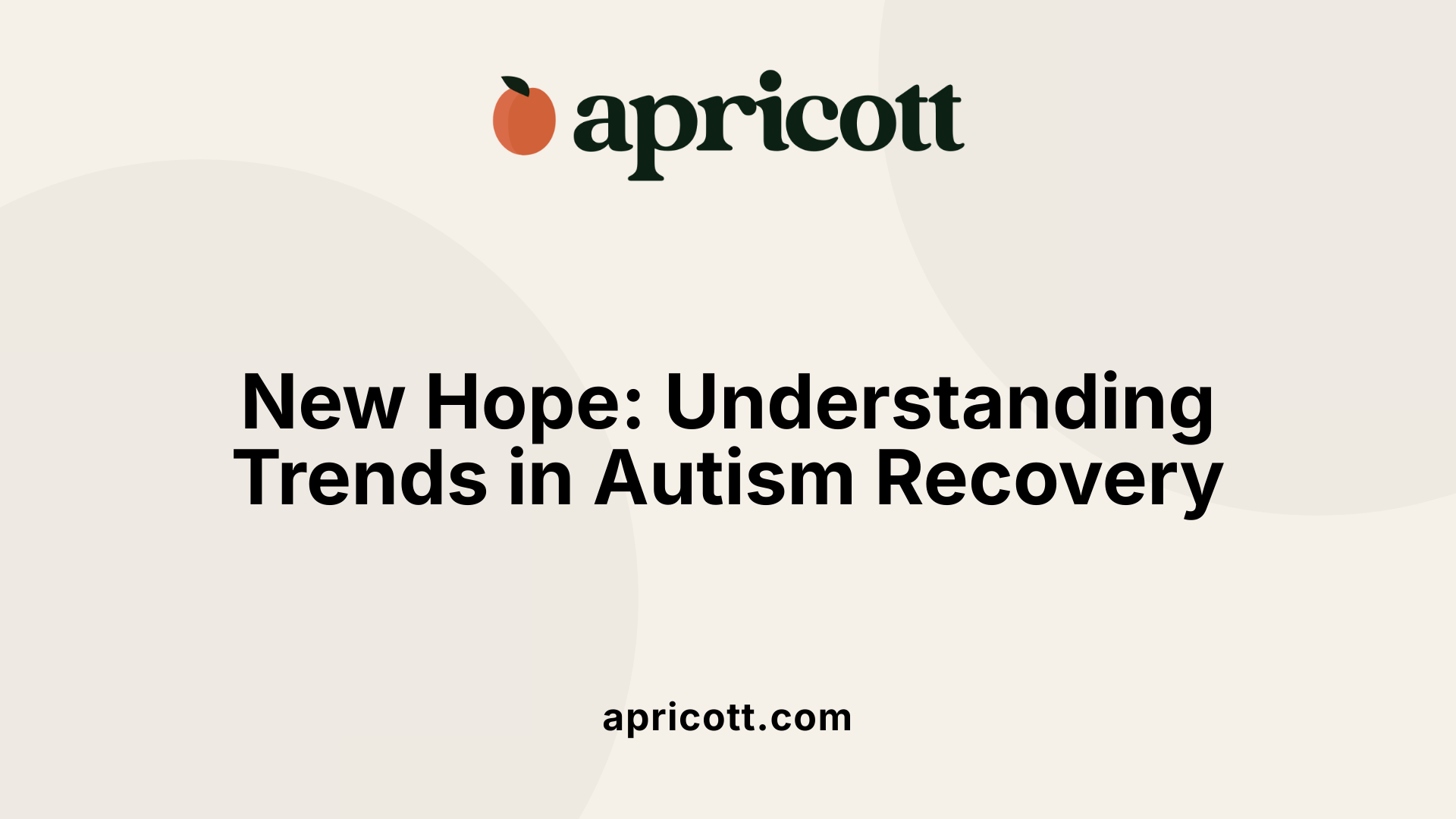
Recent studies highlight that a small but significant percentage of children with autism can undergo notable improvements or even lose their diagnosis over time. Estimates range from 3% to 25%, with some large-scale U.S. studies suggesting that between 4% and 13% of children diagnosed with ASD may no longer meet diagnostic criteria as they age.
These improvements are often linked to early detection and intensive intervention. Children diagnosed before 30 months and those receiving behavioral therapies, particularly Applied Behavior Analysis (ABA), show higher chances of recovery or symptom reduction. For example, research indicates that children treated intensively from a young age can see substantial gains, sometimes even achieving social and communication skills comparable to their non-autistic peers.
Advances in neuroimaging and genetic research have contributed significantly to understanding autism's diverse outcomes. Biomarkers identified through brain imaging and genetic testing now help predict developmental trajectories more accurately. Though complete cures remain elusive, these technological progresses facilitate personalized treatment strategies, aiming to optimize each child's potential.
While some children demonstrate 'recovered' status or significant symptom alleviation, residual difficulties such as issues in higher-level communication, attention, or co-occurring conditions like tics or depression often persist. Despite that, ongoing research continues to improve intervention methods and support systems, aiming for fulfilling lives regardless of diagnosis status.
This movement toward personalized medicine in autism involves integrating genetic data, neuroimaging, developmental history, and behavioral profiles. The goal is to tailor interventions that target specific brain circuitry and individual needs, ultimately enhancing developmental outcomes.
Early detection—preferably before age 2.5—is critical. Prompt intervention increases the likelihood of reducing core symptoms and improving adaptive skills. Behavioral therapies, especially when initiated early, have consistently demonstrated positive effects.
Recent developments include identifying neurobiological markers that help differentiate subtypes of autism and predict response to treatments. Functional MRI scans, for example, reveal differences in brain activity between individuals with 'optimal outcomes' and those with persistent autism, even when outward functioning appears similar.
The integration of genetic testing and neuroimaging informs personalized therapy plans. Recognizing individual variability leads to more targeted interventions, optimizing resources and outcomes.
Longitudinal studies show some children moving past the diagnostic threshold, but many still face challenges. The focus shifting from raw recovery to supporting lifelong development, emphasizing skills, independence, and quality of life.
| Aspect | Findings | Additional Notes |
|---|---|---|
| Percentage of recovery | 3-25% of children may lose diagnosis | Varies with severity, age at intervention |
| Predictors of better outcomes | Higher intelligence, receptive language, early therapy | Early intervention crucial |
| Factors hindering recovery | Seizures, mental retardation, genetic syndromes | These are considered unfavorable signs |
| Role of neuroimaging | Brain differences in 'recovered' vs. persistent autism | Brain function differs even in those with similar skills |
| Advances in biomarkers | Genetic and neuroimaging markers facilitate personalized plans | Improving diagnosis and targeted therapy |
Understanding the current landscape of autism prognosis involves recognizing the balance between potential for change and persistent challenges. Ongoing research promises increasingly precise, individualized pathways for supporting those on the autism spectrum.
Optimal outcomes in autism refer to instances where individuals who were diagnosed with ASD later no longer meet the diagnostic criteria. This phenomenon, often called remission, is frequently associated with early and intensive intervention, particularly behavioral therapies like Applied Behavior Analysis (ABA). Such individuals typically demonstrate significant improvements in social skills, communication, and adaptive functioning, enabling them to participate smoothly in mainstream settings.
While these individuals function effectively in daily life, subtle residual symptoms can remain. Challenges such as higher-order communication difficulties, attention issues, or co-morbid conditions like tics, depression, and phobias may persist even when a formal diagnosis is no longer applicable.
Research indicates that children who achieve remission often exhibit certain traits early on. These include higher IQ scores, strong receptive language skills, and good motor development. Early diagnosis and intervention play crucial roles, especially for children diagnosed before 30 months of age. They are more likely to experience significant symptom reduction and may eventually function comparable to neurotypical peers.
Additionally, individuals who initially presented with milder symptoms, less severe social and communication challenges, and milder repetitive behaviors tend to have a better prognosis. Many of these cases are supported by intensive behavioral therapies, the most studied and effective approach for promoting recovery.
Predictors of positive outcomes include higher intelligence levels, early and accurate diagnosis, and engagement in behavioral interventions. Early treatment offers the best chance for remission, as it provides timely support for language, social skills, and behavior.
Specific signs associated with better recovery prospects include:
Conversely, presence of seizures, intellectual disabilities (mental retardation), and genetic syndromes tend to hinder recovery prospects. These factors complicate treatment and neural development, reducing the likelihood of remission.
Even among those who lose their ASD diagnosis, some vulnerabilities can persist. These include higher-order communication issues, attention challenges, and social cognition difficulties. Furthermore, many may continue to experience co-morbidities such as tics, depression, or phobias.
While the outward behaviors may align with typical development, underlying neural differences often remain. Brain imaging studies, like fMRI scans, reveal that individuals with 'optimal outcomes' show neural activity patterns different from both typical controls and high-functioning autism groups, indicating a distinct, albeit less symptomatic, neural profile.
| Aspect | Description | Additional Notes |
|---|---|---|
| Recovery rates | Estimated between 3% and 25% | Varies by study and criteria |
| Predictors | High IQ, early diagnosis, strong language | Emphasizes early intervention |
| Residuals | Communication, attention issues, co-morbidities | Not necessarily evident outwardly |
| Interventions | Behavioral therapies, early start | Most effective when started young |
| Unproven therapies | Special diets, chelation, hyperbaric oxygen | Lack scientific backing and may be harmful |
Understanding the factors that influence recovery helps in setting realistic expectations and tailoring early intervention strategies. While some children can experience significant improvements, ongoing support remains essential, as full, lasting remission is not guaranteed for everyone.
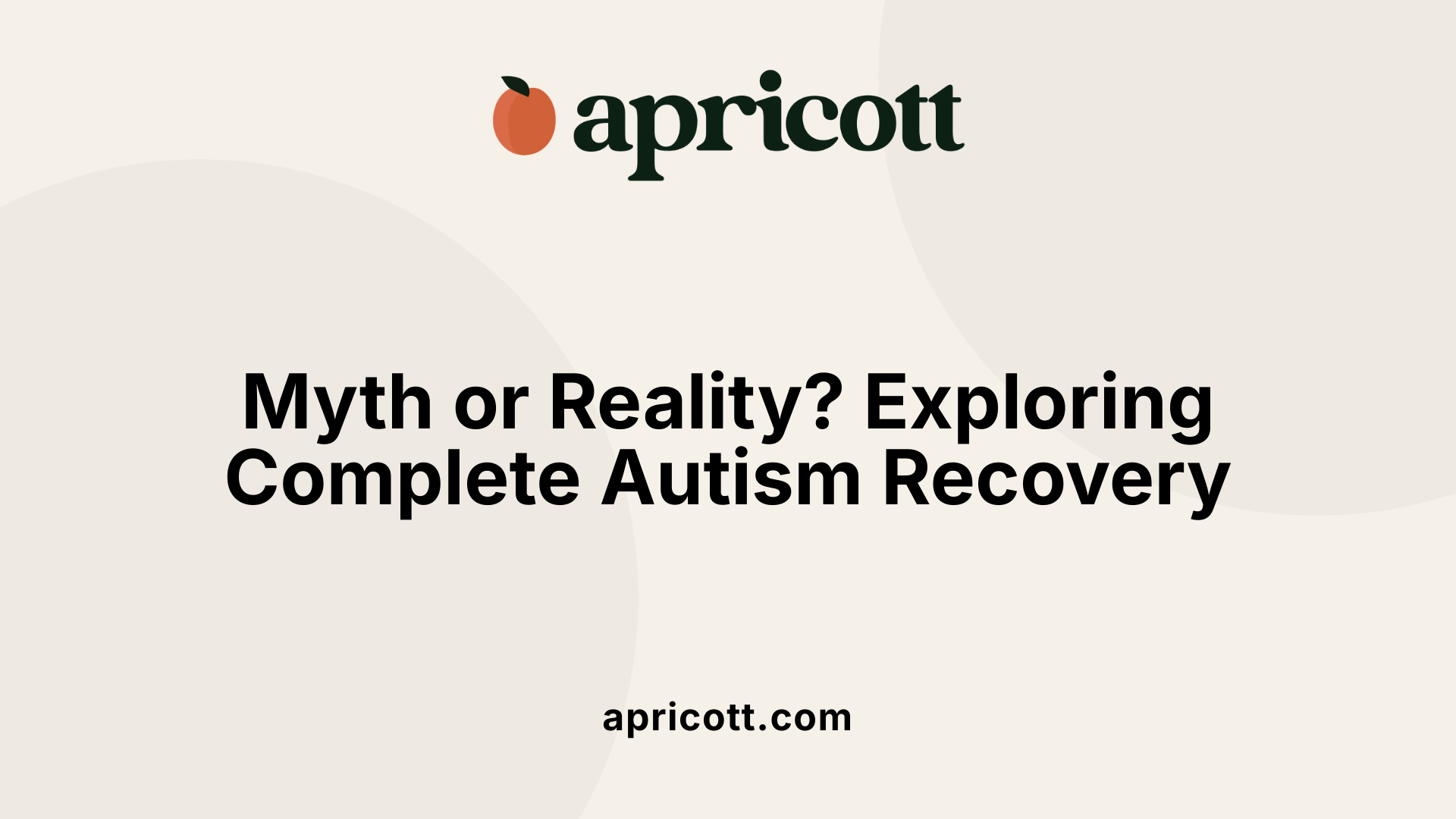
Full recovery from autism spectrum disorder (ASD) is rare. While estimates vary, research indicates that between 3% and 25% of children diagnosed with ASD may lose their diagnosis over time. Large population studies in the United States have found that approximately 4% to 13% of children could no longer meet the criteria for autism by age 8. Some adults no longer exhibit symptoms when assessed later in life, with around 9% of individuals diagnosed in childhood reportedly no longer meeting the diagnostic criteria by age 19.
Early intervention significantly affects the likelihood of symptom improvement and potential loss of autism diagnosis. Children diagnosed at or before 30 months tend to have better prospects for change, often exhibiting milder symptoms initially and benefiting from intensive behavioral therapies such as Applied Behavior Analysis (ABA). Early treatment aims to normalize input, promote social stimulus reinforcement, and develop weak skills through mass practice, which can contribute to better outcomes.
While some cases of recovery are documented, complete remission from autism remains uncommon. The most promising results tend to be associated with intensive therapy in young children, with some studies suggesting that over half of those treated early can see substantial improvements in social, communicative, and behavioral skills.
However, even in cases where children lose the diagnostic label, residual vulnerabilities might persist. These include higher-order communication and attention issues, as well as co-morbidities like tics, depression, and phobias.
People who experience significant improvement or
Recovery from autism spectrum disorder (ASD) manifests through several observable improvements in a child's development and social behavior.
One of the most prominent signs is enhanced communication skills. Children may begin to speak more clearly, use language appropriately, and participate actively in conversations. They often show better eye contact and facial expressions, indicating improved social engagement.
Another indicator is a reduction in repetitive behaviors. Children may become less fixated on certain routines or objects, showing more flexibility and adaptability in their daily activities.
Increased interest in social interactions is also a positive sign. Children might initiate interactions, respond more readily to social cues, and demonstrate greater capacity for empathy and understanding.
Progress can be seen in children gaining independence in daily routines, showing curiosity, and engaging more fully in play and learning activities. They may also display improved emotional understanding and self-regulation.
However, despite these visible gains, some subtle challenges might remain. Residual issues such as higher-order communication difficulties or anxiety can persist. Also, ongoing support, including therapy and educational interventions, may still be necessary to help navigate these ongoing challenges.
While recovery signs are encouraging, it's important to recognize that each child's journey is unique. Continual assessment and tailored support can help maximize developmental progress and quality of life.
While autism is generally considered a lifelong neurodevelopmental condition, research shows that significant symptom reduction and even full recovery are possible for some individuals, especially with early, targeted interventions like ABA. Factors such as early diagnosis, high cognitive and language abilities, and supportive environments increase the likelihood of favorable outcomes. Scientific studies continue to deepen our understanding of neurodevelopmental differences, providing hope for personalized and more effective treatments. Importantly, ongoing adaptation and support are vital, regardless of whether full recovery occurs, emphasizing that each individual's journey with autism is unique and their potential for a fulfilling life is boundless.